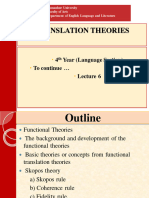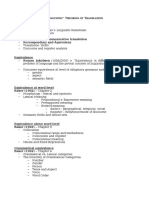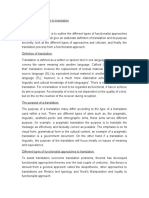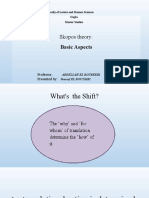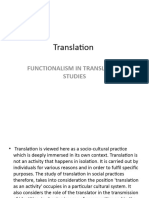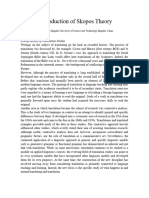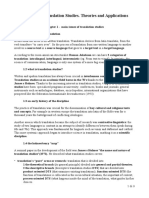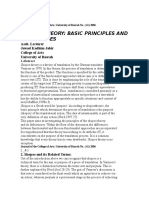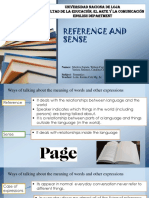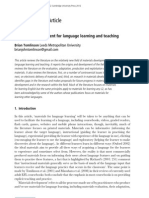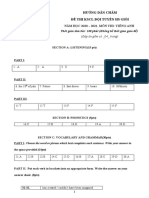0% found this document useful (0 votes)
72 views4 pagesLecture
This document provides a historical overview and summary of functional and skopos-oriented approaches to translation. It discusses:
1) How functional translation theories developed in Germany in the 1980s in response to shortcomings of equivalence-based theories. Theories borrowed from linguistics and focused on training language proficiency rather than practical translation skills.
2) How Hans Vermeer's skopos theory established purpose as the guiding principle for translation, rather than equivalence between source and target texts. The needs of the target audience and culture determine translation methods and strategies.
3) Key principles of functional translation - that translation purpose determines method/strategy; purpose is defined by the client's translation brief; a translation is functional
Uploaded by
GuillaumeCopyright
© © All Rights Reserved
We take content rights seriously. If you suspect this is your content, claim it here.
Available Formats
Download as PDF, TXT or read online on Scribd
0% found this document useful (0 votes)
72 views4 pagesLecture
This document provides a historical overview and summary of functional and skopos-oriented approaches to translation. It discusses:
1) How functional translation theories developed in Germany in the 1980s in response to shortcomings of equivalence-based theories. Theories borrowed from linguistics and focused on training language proficiency rather than practical translation skills.
2) How Hans Vermeer's skopos theory established purpose as the guiding principle for translation, rather than equivalence between source and target texts. The needs of the target audience and culture determine translation methods and strategies.
3) Key principles of functional translation - that translation purpose determines method/strategy; purpose is defined by the client's translation brief; a translation is functional
Uploaded by
GuillaumeCopyright
© © All Rights Reserved
We take content rights seriously. If you suspect this is your content, claim it here.
Available Formats
Download as PDF, TXT or read online on Scribd
/ 4
